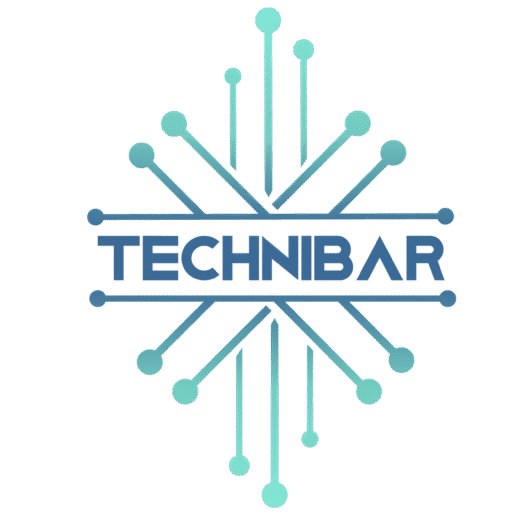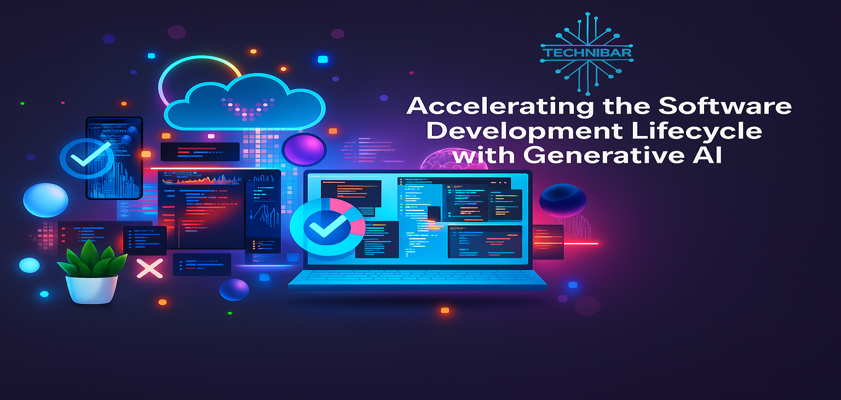Previously, software development lifecycle (SDLC) was a repetitive procedure like an act that has been rehearsed enough times. Familiar frameworks, steadily advancing toolsets, and predictable release timelines defined the pace. However, the picture has changed a lot today. Today software development is more like a race, a race at top speeds where the basics come in the form of fast product releases, live security updates, and capricious customer requirements. Traditional development methods alone can’t keep up.
What developers need now is intelligent assistance to enter Generative AI (GenAI)
GenAI is not an exotic idea any more, but it is a first-line basis of growth practice. Being an inventive co-pilot, problem-solving machine, and an efficient executioner, GenAI is assisting developers in reinventing software development. Gartner stated that an astonishing 75 per cent of enterprise developers will use an AI-powered code assistant by 2028. To assist teams in moving beyond ad-hoc experimentation to full-scale organizational integration, the AAA Framework, (i.e. Assist, Augment, Agents) provides an orderly route. The framework offers a realistic indication of how to integrate GenAI into each stage of the SDLC in order to eventually promote velocity, accuracy and innovativeness.
Assist: On-Demand Developer Support
The first phase of the AAA Framework Assist positions GenAI as a real-time support mechanism embedded directly into the developer’s workflow. In this role, GenAI serves as a context-aware coding partner. The Assist stage of the AAA Framework paints GenAI as a support system that operates in real-time as part of the local flow of the developer.
- As such GenAI is a context-sensitive coding companion in this position.
- It automatically completes code snippets, offers imports needed, creates inline documentation and detects possible mistakes on-the-fly. GenAI makes the discovery efficient.
- As new engineers join a project or are trying to investigate an unknown codebase. In a few seconds.
- It can generate boilerplate code assistance in refactoring legacy code that makes the performance and readability better.This “smart companion” approach significantly reduces cognitive fatigue.
- GenAI can perform repetitive or mechanical tasks so that developers can focus on the higher-ordered problem solving as well as the critical logic to the business.
- It also reduces the learning process of new languages of coding, providing talkative interpretation in real time.
- Although GenAI may not provide end-to-end solutions immediately.
- it delivers a powerful jumpstart velocity and code accuracy from day one.
Augment: Reinforcement of Engineering Product
The second stage, Augment, transforms GenAI to an active supplementer of engineering processes instead of a passive assistant. On this tier, GenAI assists teams to level up the quality of code and development procedures. It is able to do code reviews, find security vulnerabilities, make you stick to style conventions, and even produce unit tests, even high coverage unit tests, automatically. GenAI would provide the ability to simulate test conditions and patterns of failure both in and across environments to QA teams.
It also happens to be very good at converting abstract requirements into functional prototypes. As an instance, product managers can pass user stories to GenAI tools, which in turn, generate functional stubs or front-end mockups.
- This fills the gap between an idea and action- accelerating the rate of iteration, and keeping business objectives in mind.
- Teams receive a multiplier effect in the ability to mix GenAI throughout the testing, documentation, design, and deployment pipelines.
- They not only move faster but also provide more reliable, maintainable and secure software.
Agents: Large-Scale Self-Executive Machine
The last level, Agents, denotes the ultimate level of integration of GenAIs, i.e. the ability of agents formed by AI to handle entire activities or processes on their own. These self-governing units are able to bring up their development environments, run fixed CI/CD pipelines, analyse the log files of the system and clean up the common misconfigurations without human intervention. Simply put, GenAI becomes a co-worker in an operation as opposed to an assistance in productivity. Consider an AI agent that detects a faulty API endpoint and creates the required code, runs the regression tests, and makes a pull request even before the engineering team is even aware of it.
- This automation does not just free the system of bottlenecks, it also opens room to developers to concentrate on being innovative, i.e. to resolve complex problems, to dwell on new architecture and experiment with new technologies.
- With several specific agents (e.g., code refactoring agent, testing agent and deployment agent), organizations are able to develop pipelines powered with artificial intelligence and operate them in parallel to the human pipeline, which means agility in terms of progress the organization can see 24/7.
Why GenAI is the Future of SDLC
The following are the reasons why GenAI is changing the face of software engineering:
Speed to Market:
What took hours to complete such as documentation or the creation of test cases can now be done in minutes.
Quality Assurance
AI-based analysis can detect edge cases and other security issues that could be missed during manual analysis.
Talent Empowerment
Raw developers accelerate more quickly, and senior engineers push tedious tasks aside and concentrate on gaining system insights.
Cross-square Collaboration
GenAI works across products, design, QA and operations to ensure every team has a common language.
Scalable Development
AI agents can facilitate at scale on routine issues so human teams can be free to be creative without becoming bogged down in support tickets or technical debt.
Implementation Considerations
Though the possibilities are enormous, GenAI implementation should be approached wisely throughout the SDLC:
Keep it Simple
Initiate your program with the tools on the Assist level like code autocompletion and documentation generation to gain confidence and determine the effect.
Secure the Pipeline
GenAI is obligated to adhere to privacy regulations, intellectual property laws, as well as compliance laws. Select platforms which provide an enterprise level of security.
Educate the Team
Provide engineers with training as to how to incorporate GenAI into their workflow. Promote trial and error along with constant feedback.
Measure ROI
One should measure velocity, quality, the number of releases and time to respond to incidents to learn the actual values.
Conclusion: The more intelligent approach to developing the software
The software business is at a turning point. The current state of affairs requires agility that is unavailable in the traditional development lifecycle. GenAI is not another tool, it is a paradigm shift. Adopting the AAA Framework Assist, Augment, Agents- with the AAA Framework Assist, the organizations can unleash a new era of software engineering, fast, innovative, and intelligent. By getting the appropriate strategy, development teams will be able to shift writing code to arranging intelligent systems that write the software in question, test, and deploy it, with minimal impediments. SDLCs of the future not only go faster, they also go smarter, more collaborative and are limitlessly expandable.
FAQS
1. What is generative AI (GenAI) related to software development?
Answer:
Generative AI Artificial intelligence systems that can create content (in code, documentation, test cases, or eventual design prototypes) under the direction of a prompt or from patterns it has learned. GenAI tools can help developers in software development through automation of repetitive work, code quality and speed of delivery.
2. What does GenAI do to increase software development lifecycle (SDLC velocity)?
Answer:
- GenAI accelerates:
- Creating auto-generated boilerplate
- The support of debugging and refactoring
- Generating unit and integration tests
- Back up and code inspection
- This saves the amount of time spent on routine tasks and enables the developers to do high-value work.
3. What is the AAA Framework and how does it contribute to the implementation of GenAI?
Answer:
Assist, Augment, Agents (AAA Framework) is an incremental process to applying GenAI in the process of development:
Assist: GenAI is an intelligent assistant (e.g., autocompletion, suggestions)
Augment: GenAI increases productivity with testing and documentation as well as security checks
Agents: Autonomous AI can work without direct instructions (e.g. bug fixing or updates release)
4. Are GenAI tools safe to use in enterprise software development?
Answer:
Yes, but when being done with the appropriate security in mind. The platforms to be selected are GenAI and meet data privacy regulations, have on-premise solutions, and secure intellectual property. Test AI code in terms of accuracy and security.
5. Is it possible to use GenAI tools by junior developers?
Answer:
Absolutely. GenAI can act as a tutor to the junior developers by providing code recommendations, logical descriptions, comprehending a lesser-known language or framework, etc. It helps to be more confident, decrease the onboarding time, and speed up the skill improvement.








